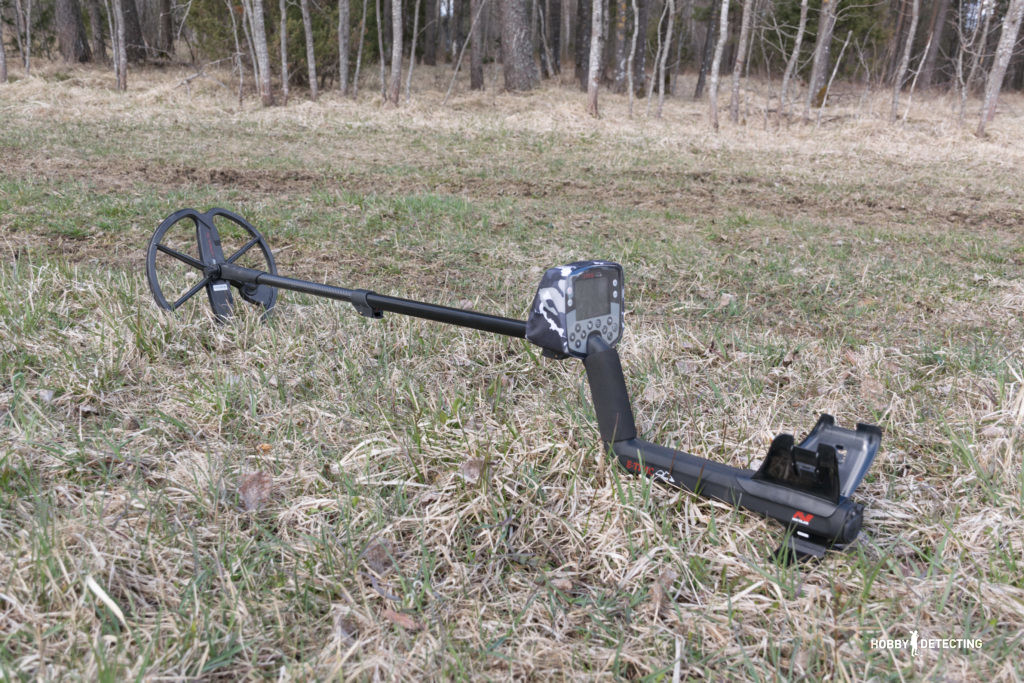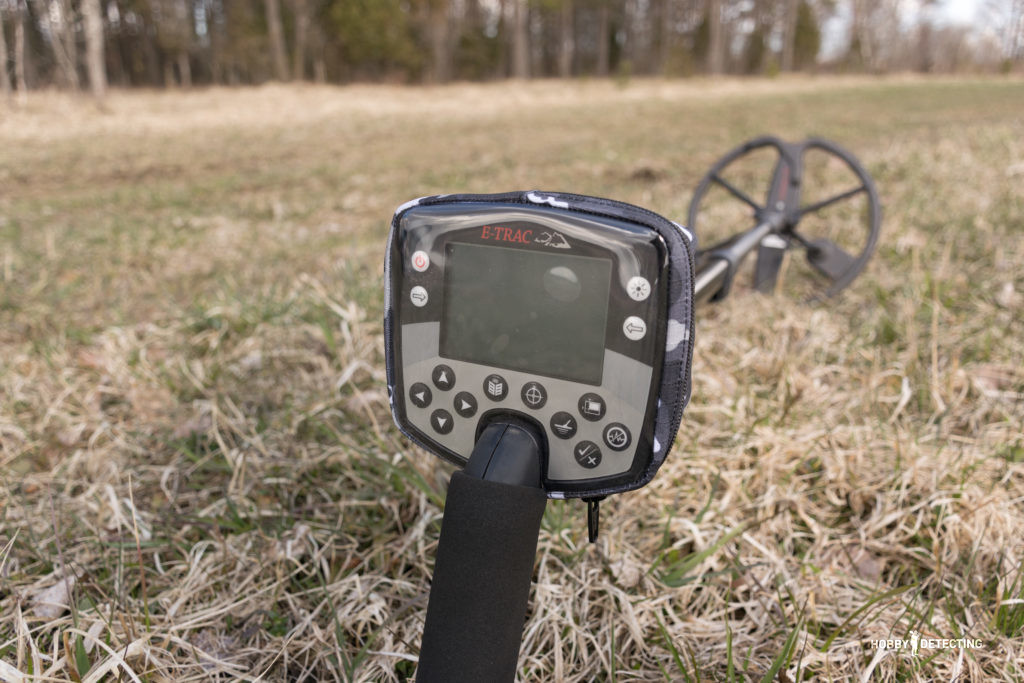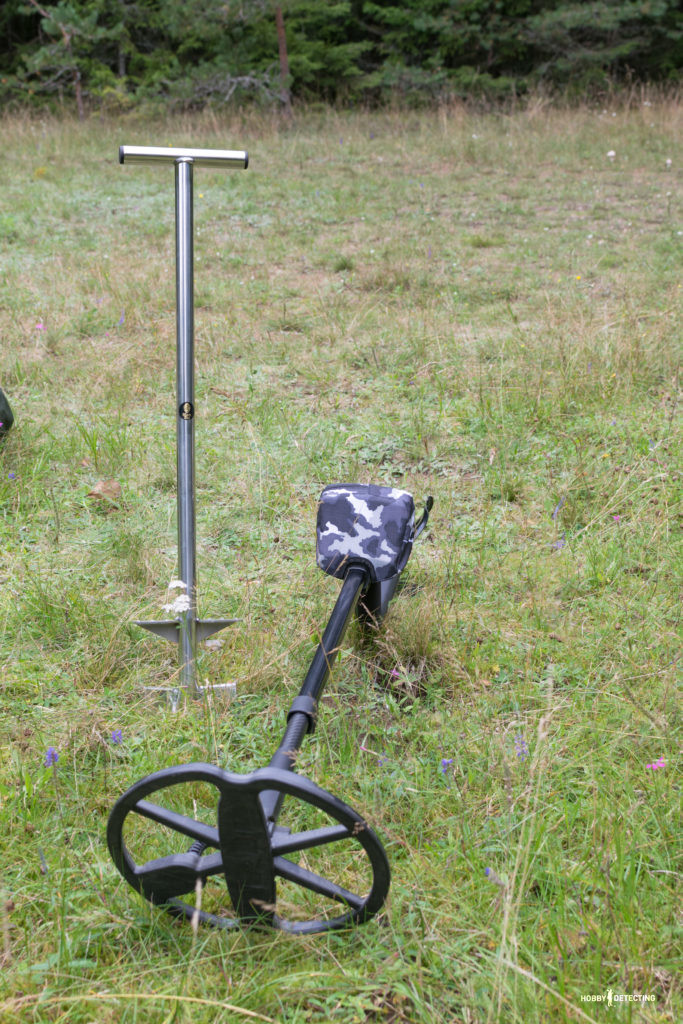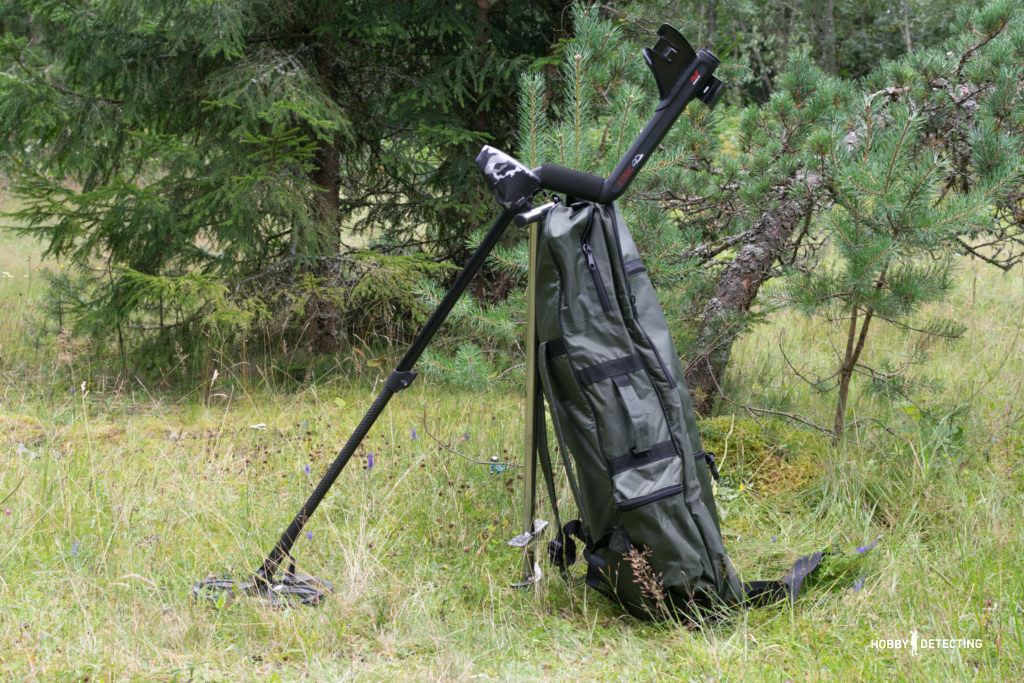Minelab E-Trac is an outdated, but serious professional device for digging! (Our review+)
Nowadays, when more than 50% of diggers who have been digging for a long time (read — professionally) go with an XP Deus metal detector, some devices are becoming history. But this does not mean that they are completely bad and that you can’t dig up anything with them, as some beginners think, no. There are still a large number of diggers who go with either ancient or professional time-tested models. For example, as one of the most serious tools for a cop in the entire history of treasure hunting — Minelab E-Trac.
Metal detector design
Содержание статьи:

The Minelab E-Trac metal detector (let’s call it simply, as all comrades call it: «Tractor»), is made according to the standard — S-shaped rod, display unit on the rod, coil at the end. It’s simple. The heaviness of the device has already become the talk of the town, everyone was talking about it, but the truth turned out to be a little different than popular rumor (as usual) — The weight of the device is 1 kilogram and 850 grams (including batteries), plus a 30 gram case — the total will be about 1.9 kg +/-. The device feels completely different in your hands — a wide and very comfortable armrest, which allows you to work with the device even in a heavy jacket, and all thanks to its good balance. At least my hand tired with it in the same way as if I were swinging Nokta Impact, for example, but the balance in it is better than that of AKA Signum, that’s for sure!
The battery compartment, which is located in the armrest, holds 8 batteries. I used batteries, it’s actually cheaper, because the device is quite power-hungry and eats up batteries like crazy. One of the interesting features of the device that most likely caused a lot of surprise in the digging community is the wire hidden inside the rod.

The rod is attached under the block using a latch — another design feature that is used in some models of modern metal detectors.

The device is not waterproof, which means using a case is advisable. I took the case in advance from one master with Review — Romana. The photo above clearly shows how wide the Tractor’s armrest and the entire compartment are. The handle is wide and comfortable to grip; for large hands this is the best option.

As standard, the Tractor comes with 11″ DD coil, butterfly shape. Lower rod — carbon! This is a good indicator of strength and light weight. The reel bolt is thick and durable, so you don’t have to worry about it breaking or getting lost. The wire from the coil is installed directly into the hole from the lower rod.
When looking at the detector unit, a beginner may have many questions, especially regarding the number of buttons on the front panel. In principle, the entire interface and the number of buttons could be further reduced to a minimum, but someone at MineLab decided not to think too much about this issue.

The display is large and bright enough (you can turn on the backlight) so that you can see all the information in bright sunlight.
Technology and functionality of the device
Now regarding the main feature of the device — while all metal detectors operate at low frequencies using VLF technology, the Tractor operates at 28 frequencies simultaneously — from 1.5 to 100 kHz! MineLab called this technology FBS — Full Band Spectrum. The technology is no longer new and MineLab has gone far with its developments — Equinox was recently announced with Multi-IQ technology, which, in principle, is very similar to FBS, and FBS II technology, which powers the Minelab CTX 3030 metal detector. I was quite skeptical about such indicators and advertising signs, but over time it became clear that that this is true and works — The device is equally sensitive to both large targets and very small ones. Sensitivity to small targets is regulated by a special setting «Volume of weak signals», which is also available on the XP Deus metal detector — simply the sound and indicators are amplified for better identification of small targets.
Another key characteristic of the device that sets it apart from its competitors — I’m not afraid of such a turn, this is a graphical target determination system SmartFind. It is made in the form of a coordinate grid with axes Inductance (CO) from 1 to 50 and Conductivity (FE) from 1 to 35 units. As soon as any object falls under the coil, the metal detector automatically checks it and displays the result on the coordinate axis. Ferrous metal and unwanted targets are usually located at the bottom of the screen, all priority and interesting targets fall at the top of the screen. For example, copper coins fall in the upper-right corner, and medieval weak silver coins fall in the upper-left (middle) corner. The plugs are cut off and are also easy to understand. With the device you actually have to dig much less, because after several exits, when many targets have already been dug, you begin to understand what these indicators on the display and the coordinate axis mean.

Discrimination is also easy to establish — It is enough to simply draw it on the device in the literal sense. Draw using the settings and buttons on the front panel. I usually either split the screen into two parts — for reconnaissance this is the best option, but for finishing a point it removes discrimination completely. This can be seen in the photo — the black segment on the display is discrimination against unwanted targets, the light segment on top — This is a discoverable segment.
The device perfectly shows the depth of the object and, what’s nice, it rarely makes mistakes. There is no need to perform ground balance here; you just need to tune out the interference and the metal detector will automatically find the desired channel with the most stable operation. The process takes up to 10-15 seconds, usually.
Settings
Now let’s talk a little about the settings. A tractor is a very easy device to learn, you begin to understand this when you simultaneously have experience as a cop with such metal detectors as XP Deus, AKA Signum. In terms of complexity, it is on the same level as Teknetics T2 and Fisher F75, only with a different logic of settings.
The main device settings that a digger needs to know and dig effectively are:
- Discrimination (yes, those drawings on the screen called «masks»)
- Deep Goals — yes/no (if intelligence, then you can also put yes)
- Quick response — yes/no (you can set yes during reconnaissance, but no when finishing off)
- Audio response settings, especially if you are using headphones — this will allow you to focus on the sound when wiring the metal detector; you don’t always look at the display.
- Sensitivity (as always, the main thing is to set it according to your feelings, the balance between stable and unstable operation of the device)
- Threshold tone — ability to hear the weakest signals from the ground (useful for finishing moves)
- Ground adjustment — complex (in theory, complex gives more depth on neutral ground)
I won’t suggest any combinations — go out into the field, open the manual, place a couple of targets (coins) on the ground, play around and the desired combination will easily come to you.
Or, as an option, you can download ready-made settings and install them into the metal detector’s memory via a computer — the corresponding software is included.

My first find with the Tractor was a penny of Nicholas the First, found in a knocked-out, over-knocked field. The story is simple — fields around the old manor, which is still standing and even someone lives in it (I was surprised). The fields have been walked and carved out for decades (I’m sure of this, it’s a sweet spot according to maps). Suddenly there was a good signal near the road, I dug deep, but a penny appeared. I don’t know if it was worth digging so deep for it, but it was in good condition, so it went into the lost and found collection.

According to the indication on the display, it was already clear that this copper penny was lying at a depth. Still, these Fe-CO indicators simplify life quite well, it’s like two VDIs in one device, and not one!

According to the operating speed of the device — The metal detector, after all, is a little slow, it is for thoughtful and serious searching, not for quick and easy walks across the field at a speed of 5 km/h. But the result with it will be completely different, a thoughtful search now = more finds.
Is it advisable to purchase in 2017-2018?
The device is not bad, yes, but its time is also slowly coming to an end. I don’t even know what to say. If you take it, you can do it with your own hands; it will definitely bring back quite good finds, and its price with your own hands will definitely be cheaper than all other professional metal detectors, perhaps with the exception of the brand new Fisher F75 and Teknetics T2. Especially when the main digging community switches either to working in trash cans (because in many places there is nothing left to dig) or to finishing off those places that have already been covered with metal detectors. And for work on finishing off fields, this device is very suitable, thanks to its still effective properties.

Well, a little bonus, how you can make the operation of the device even deeper and more stable — install a coil with an amplifier from Nel or CORS, as in this case. We will write about the result separately, of course!
